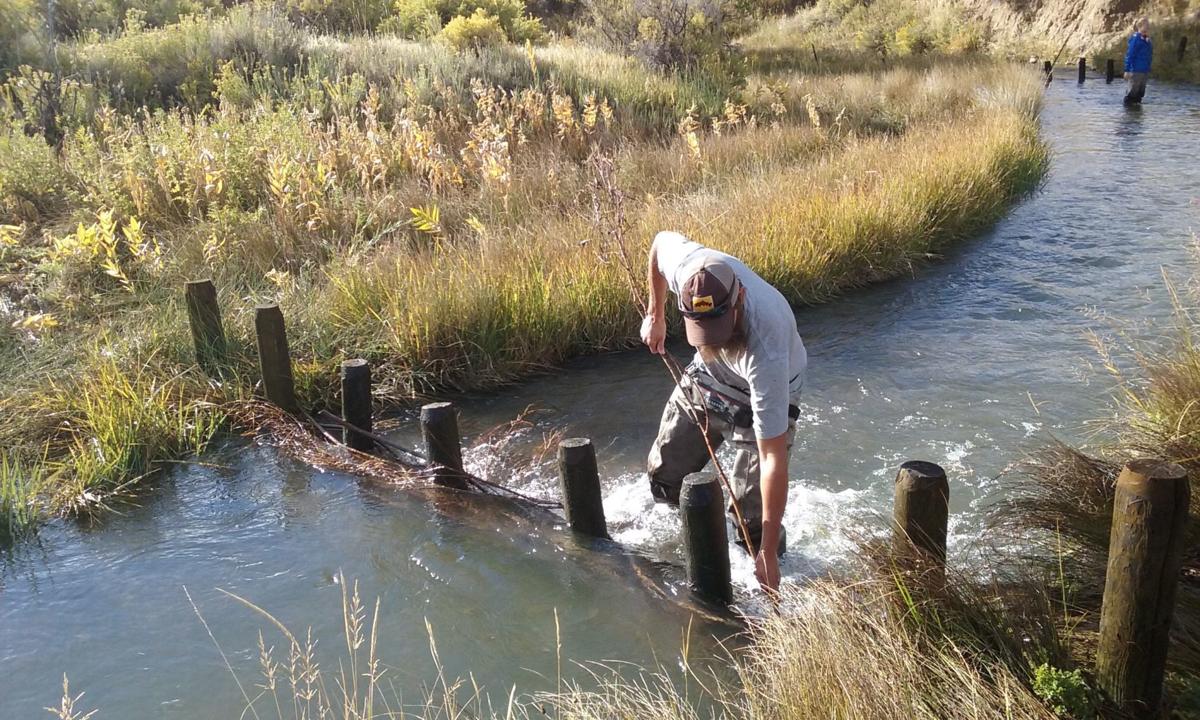 Beavers: An Unlikely Solution To Western Drought
Beavers: An Unlikely Solution To Western Drought 
I’ve been thinking in these past few days about the tight space a certain kind of beaver advocate finds themselves in. The kind that comes when you have been listened to a ‘little’ bit, and people are behaving as if they were willing to do you a favor by telling you privately how difficult the situation is behind the scenes and how they are doing everything they can. I was thinking of the vice-grip of pressure you feel in those moments, not to give up the thing you’re trying to protect, and not to be overpowered, but also not to appear unreasonable, (heavens!) because you don’t want to lose your hard-won status as the practical one who can see both sides and is willing to make compromises. You want to avoid saying “don’t do this” outright if you can, but you see the train is moving in the wrong direction and you want to step in before it gets too far from the station.
 Maybe what I’m describing is too vague to understand, I always thought it was unique to my experience on the beaver subcommittee, but I had an hour conversation yesterday with a beaver guardian that reminded me I’m not alone in this. The farther I am from the drama the easier it is to see the chess pieces moving. “I shouldn’t be telling you this but” “We’ve done everything we can to work with the landowner but” “you did a great job explaining your position but now it’s time to back off, or you risk turning folks against you”.
Maybe what I’m describing is too vague to understand, I always thought it was unique to my experience on the beaver subcommittee, but I had an hour conversation yesterday with a beaver guardian that reminded me I’m not alone in this. The farther I am from the drama the easier it is to see the chess pieces moving. “I shouldn’t be telling you this but” “We’ve done everything we can to work with the landowner but” “you did a great job explaining your position but now it’s time to back off, or you risk turning folks against you”.
It’s not just me. When you’re alone on the other side of that message you feel so torn and motionless. You can’t go forward, you can’t possibly go back, and you know one misstep could bring down the entire card house that you’ve worked so hard to put together.
I thought last night that it might be a uniquely female experience although I never did before. This pressure to behave while you are pushing hard for the thing you want to save, and never act like anyone is doing anything wrong or lying to you even when you know damn well they are – that’s the beaver-guardian’s dilemma, And it’s what I felt every single day on the subcommittee and right up through the sheetpile destruction. It’s why to this day I can say with out hesitation that serving on the beaver subcommittee was the hardest thing I’ve ever done in my life, harder than my dissertation, harder than doing therapy with sex offers, harder than working in the teen psych hospital, harder than testifying as an expert witness.
It was HARD.
It was only when I saw those historic sheet pile photos, and realized that everyone had been lying straight to my face outright for months, with their so-sorry voices and secret phone calls — that all their covert messages to be patient and forbear were outrageous falseoods, that I finally felt free of it. Done. Released. So that now when Carmen in Texas, or Nancy in Michigan or Judy in Port Moody tells me that they feel confused and trapped and like they’re getting pressure on all sides from the city to cooperate but they know its the wrong thing and would hurt the beavers I can literally see the choking translucent net that holds them constrained.
I remember exquisitely how it felt, and that helps me point them towards the scissors so they can cut themselves free.
It took a long time, but I started learning eventually that it’s okay to be outraged when people behave outrageously. And that the amount of power you have is actually the opposite of the messages you are helpfully being told about it.


 Okay, I’ve checked all the website places I can think of to see if they’re fixed.
Okay, I’ve checked all the website places I can think of to see if they’re fixed.
 Nice to think of the big beaver mobile they want to put together. Traveling around the state picking up unwanted beavers and putting them in just the right home.
Nice to think of the big beaver mobile they want to put together. Traveling around the state picking up unwanted beavers and putting them in just the right home. One of my favorite parts about reading
One of my favorite parts about reading 
 “Beaver activities are not really welcome where humans live because beavers make rivers really messy,” said
“Beaver activities are not really welcome where humans live because beavers make rivers really messy,” said 



 Four hundred years after the beaver was hunted to extinction in the UK, two of the mammals have been reintroduced on government land in an English forest as part of a scheme to assess whether they could be a solution to flooding.
Four hundred years after the beaver was hunted to extinction in the UK, two of the mammals have been reintroduced on government land in an English forest as part of a scheme to assess whether they could be a solution to flooding.




































